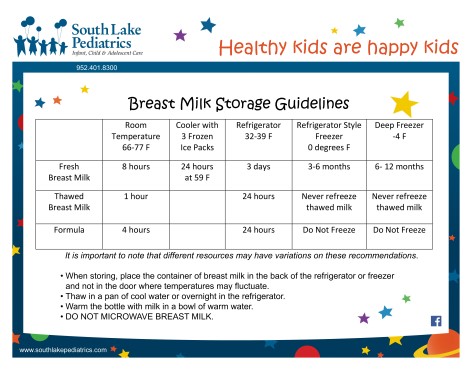If you are a breastfeeding mom, anticipating becoming a breastfeeding mom, or a dad wanting to help with feeding your new baby, you likely have questions about when and how to use a breast pump. Here are some of the most common reasons for the use of a breast pump:
- It stimulates breasts early to encourage milk to come in, generally within the first week after delivery
- Pumping helps with initial engorgement as mom’s milk comes in, can relieve pain, and can be used to help with mastitis
- It helps with milk storage and bottling
- It can increase mom’s milk supply at any age of the baby
As a new mom, you may have already experienced the use of a pump at the hospital or shortly after delivery to help with stimulation of the breasts which encourages your milk to come in. Initially, babies will experience mom’s early milk or “colostrum” while awaiting full milk production. Full production generally happens 3-5 days after delivery (sometimes sooner for moms that have breastfed previously). If there is a delay in your milk supply, you may be encouraged in the hospital or by one of our lactation consultants to start using a pump at home to provide additional stimulation to the breasts or to have breast milk to give to the baby as supplementation if needed.
Pumping can also be used as your milk comes in if you experience discomfort. Generally, when mom’s milk starts to come in, there will be a period of engorgement that lasts about 48-72 hours. Our bodies use this time to taper milk to the right amount for the baby. This period of engorgement can be very uncomfortable. In some situations, it can be helpful to pump for a couple of minutes to help relieve the pressure. In situations like this, it is not recommended to continue to empty the breast with prolonged pumping. This tells the body that baby is requiring more milk and it will continue to increase mom’s milk supply and prolong this period of engorgement. Mastitis, an infection of the breast, may require that mom pumps for a longer period to get the clogged milk duct cleared, which helps healing.
The most common question I get about pumping is when should mom start pumping to store milk in anticipation of returning to work or to have as a back-up supply. My recommendation is to start pumping 1-2 times a day for storage once feedings at the breast are established, around that two week mark. The best time to do this is after the first morning feeding and, again, in the afternoon after a feeding. With pumping 1-2 times daily, the freezer storage will start to build quickly. Mom should be able to taper off the extra pumping sessions easily, without rebound engorgement, when she feels she has a good back up supply. The milk obtained from these pumping sessions can be stored in freezer bags and arranged by date. Please reference the bottom of this article for details on how long you can store your milk.
Another common plan for initiating pumping includes when there are concerns about decreasing milk supply. This is where you may hear the term “power pumping.” We will advise you to increase pumping after feedings to provide extra stimulation to the breast and ramp up your supply to what the baby needs. These pumping sessions should last about fifteen minutes.
Pumping can be used in conjunction with feedings at the breast or as a stand alone option. There are many more situations in which your lactation consultant may discuss pumping with you. Never hesitate to reach out to your favorite lactation consultant at South Lake Pediatrics to discuss how pumping can be used for you and your baby. We are here to support our breastfeeding moms!


Leave a Reply